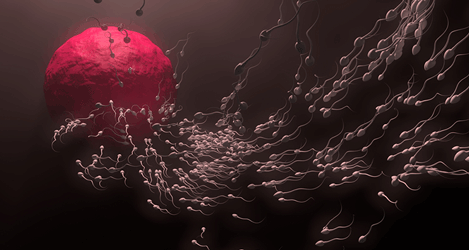
If you are trying to get pregnant you will need to know how to recognize the signs of ovulation. This occurs when the ovary is prepared for pregnancy and releases an egg, during the ovulation period the woman in most fertile. Some find it hard to recognize the signs, but if you know what to look for the process is a lot easier. You should first learn your cycle as this will make it easier. The myth is that all women have 28 day cycles and this is not the case. The American pregnancy association explains that women ovulate between day 11 and day 21 of their cycle. There are two parts to the ovulation cycle; the first half is known as the follicular stage and the second half is the luteal phase. The most common physical signs are; increase in body temperature and cervical mucus, abdominal cramps, tender breast and an increased libido.
These are just some of the most obvious signs of ovulation. During this time there is a change in body temperature. Many people use a basal body temperature test. However, this can only measure the temperature after ovulation so it is unable to predict when ovulation will transpire in a given cycle. It is best to use a regular thermometer. Abdominal cramp is also a way of recognizing the ovulation signs. Some women experience pain in the lower abdomen, this is known as Mittelschmerz and means 'middle pain' in German. Although in some cases this pain can last up to three days, generally they usually subside within a few hours.
An increase in cervical mucous is also a sign of ovulation. You will need to examine the mucous in order to tell whether or not you are ovulating. Before the ovulation period, there will be dryness surrounding the vulva; this means there is very little chance of conceiving. When you are approaching ovulation, the discharge has a cream or white color and is moist. During the ovulation period, the mucus appears very thin and clear and during a 'finger test' the mucous should be able to stretch up to several centimeters before breaking. This is the time when the chances of conceiving are highest.
Another way to tell if you are ovulating is by detecting the position of the cervix. The cervix will be low making it easy to reach and the entrance will feel closed during the first half of your cycle. The cervix will become soft before ovulation, opening the entrance of the cervix. However, during the peak of ovulation the entrance will be harder to reach with your finger as the entrance increases to its maximum. During this time many women also experience an increase in sexual desire. This makes sense simply because the main purpose of ovulation is to get pregnant. The body therefore prepares itself for intercourse, which may be why there is an increase in libido during this period. These are just a few of the ways in which you can recognize the signs of ovulation, a doctor or physician may have more information on this issue.
